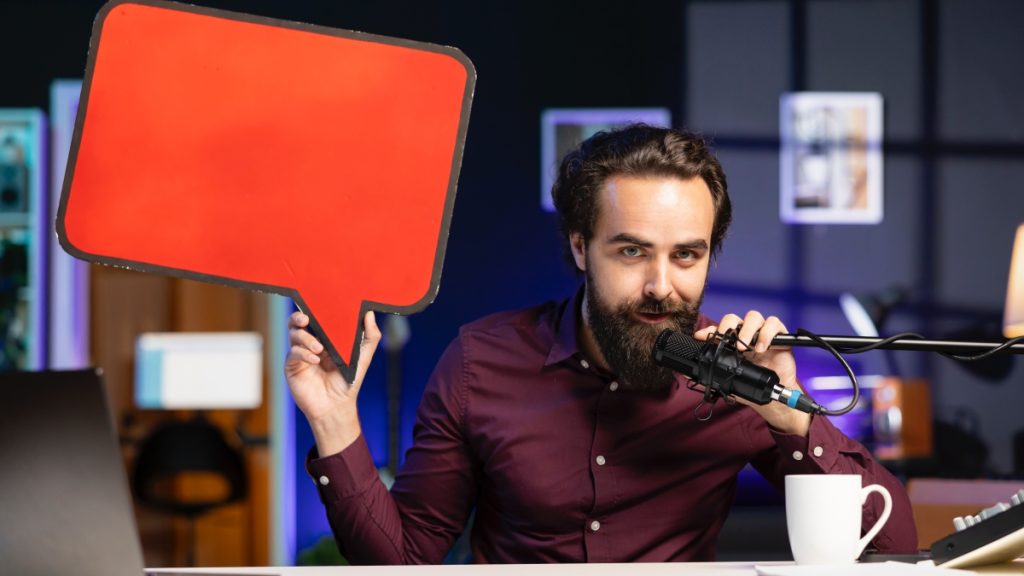“Words have meaning. Type has spirit. The combination is spectacular,” says renowned graphic designer Paula Scher. And that’s all you need to know about the significance of typography in building your brand story. The fonts you use can shape how people perceive your business and influence their trust in your brand.
Typography isn’t just about picking a font that looks good—it’s a vital part of your brand’s identity. Whether you’re starting fresh or refining an existing brand, understanding how to choose and use fonts can make a big difference.
What is Typography and Why Does It Matter?
Typography is the art of arranging letters and words in a way that makes the message clear and readable. It’s a key player in setting the tone for your brand. Think of it as the voice of your written content—friendly, bold, elegant, or serious.
Do text messages typed out in all caps look like the sender is yelling at you? The way text is treated could evoke certain emotions and reactions. The fonts you choose and how you use them can make a strong first impression.
For instance, a sleek, modern sans-serif font like Montserrat might suit a tech startup, while a timeless serif font like Lora could work well for a boutique shop. Each font tells a story, and your job is to pick one that tells yours.
Simple Rules for Choosing Fonts
Choosing the right fonts doesn’t have to be complicated. A few key principles can help you make a practical and impactful decision:
Match Fonts to Your Brand’s Personality
Start by thinking about your brand’s personality. Are you aiming for a playful and approachable look? Or does your brand lean toward sophistication and professionalism? Fonts can communicate these traits.
For example:
- Playfair Display paired with Raleway gives a classy yet modern feel.
- Poppins with Open Sans offers a clean and contemporary style.
Look at popular pairings for inspiration, but always consider what fits your brand best.
Stick to the “3 Font Rule”
Using too many fonts can make your designs look messy. Limit yourself to three:
- A primary font for headings—this one grabs attention.
- A secondary font for body text—easy to read for longer content.
- An optional accent font—used sparingly for highlights or special elements.
This simple approach keeps your designs consistent and easy on the eyes.
Prioritize Readability
Your audience needs to read your message without effort. Avoid fonts that are overly decorative or hard to read at smaller sizes. Test your choices on different devices to make sure they look good everywhere.
A clear font hierarchy—with noticeable differences between headings, subheadings, and body text—also helps guide the reader through your content.
Building a Brand With Typography
Typography isn’t just about fonts; it’s about creating a system that works across your website, social media, and print materials. Consistency is key.
For example, brand guidelines often include:
- Font sizes for headlines and body text.
- Spacing between letters, lines, and paragraphs.
- Rules for bold or italic styles.
These details may seem small, but they add up to a unified look that makes your brand instantly recognizable.
The Four Basics of Typography
To make the most of typography, keep these basics in mind:
Alignment: Decide whether your text is left-aligned, centered, or justified. This choice should match your brand’s tone and style.
Contrast: Use differences in font size, weight, or style to highlight important information.
Spacing: Pay attention to the space between letters, lines, and paragraphs. It can affect how professional your designs appear.
Consistency: Stick to your chosen fonts and styles across all platforms to create a seamless brand experience.
How Designers Approach Typography
Professional designers think about more than just the look of a font. They consider the emotions it conveys, how it fits with other design elements, and even how accessible it is for people with different needs. Designers also ensure fonts work well in all formats, whether on a business card or a website. This level of thought is what separates amateur designs from professional ones.
Why Hiring a Design Agency Can Help
Choosing the right typography takes time and attention to detail. While these tips can guide you, working with a design agency makes the process easier. Professionals know how to align fonts with your brand’s message and create a system that works effortlessly across platforms. Plus, agencies offer options for every budget, so you don’t have to do it all yourself.
Typography has a big impact on how your brand is perceived. The fonts you choose should reflect your brand’s personality and help your audience connect with your message. By following these tips, you’re off to a strong start. And if you’re ever unsure, a design agency can provide the expertise and support you need to get it just right.
